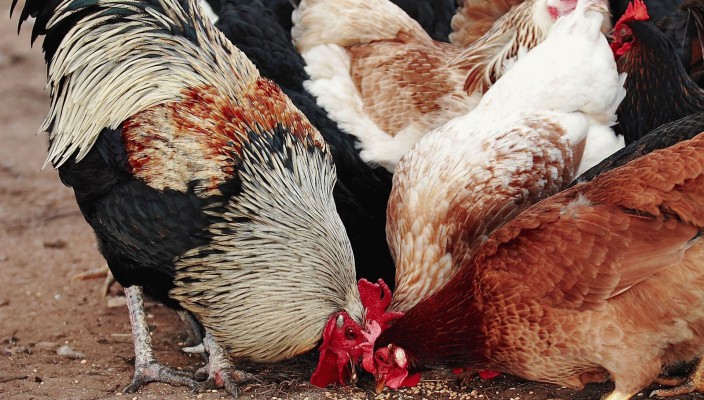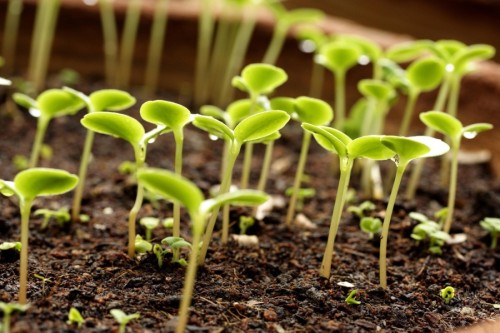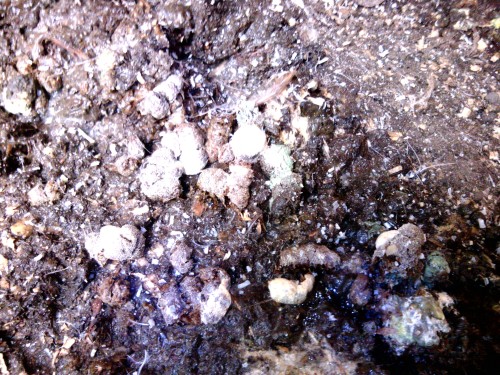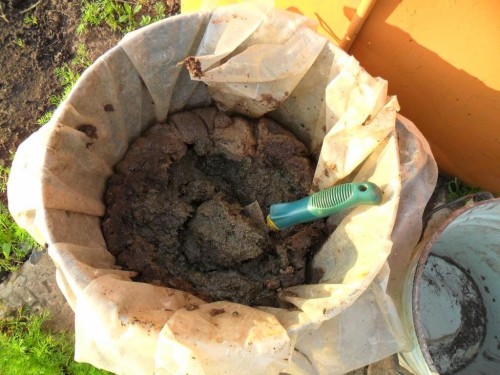A very popular fertilizer of natural origin is bird litter. Unlike chemicals, it is distinguished by a completely natural composition, and it contains valuable organic and mineral substances. The application of this fertilizer stimulates biological processes in the soil, and it is long saturated with nutrients. Such feeder has a beneficial effect on the development of plants, stimulates flowering, accelerates the appearance of zerovy and fruits, contributes to an increase in crop yields. The competent use of bird litter as a fertilizer will contribute to growing excellent harvest without harmful chemicals contained in it.
Content
The use of bird litter as fertilizers
Bird litter, which is a waste of vital activity of birds, for many centuries used to increase soil yields. This tool is very popular, because the litter is a valuable and affordable concentrated fertilizer, which in its properties of soil power is largely superior to the manure of cattle. In the speed of useful influence, the litter is not inferior to mineral fertilizers (these additives are even effective, but are sufficiently heavy for soil and grown vegetation). This agent acts softly and easily digested by plants, besides, it is much cheaper, while its action is preserved for a long time. The litter gradually decomposes, providing plants a constant slow feeding - they become stronger, powerful, while there is plenty of fruiting with healthy and beautiful fruits.
As a rule, for feeding soils are used by the litter of poultry (chickens, turkeys, ducks, geese, pigeons). It is known that chicken, turkey and pigeon are distinguished by the richest biological composition as fertilizers - such a phenomenon is due to the diet of these bird species, so it consists mainly of grain. As for the ducks and geese, due to their nutrition, they are predominantly grass, their litter contains a greater amount of water and less valuable as fertilizer.
A bird litter as a fertilizer can be used for any kinds of soil when feeding plants or under the step. This agent does not fit on the beds. After its introduction, the increase in the yield of the soil by 20-40% is maintained for two or three years after the initial introduction of such fertilizer. It is worth noting that optimal acid is installed on the treated position of the soil, the mold will not appear on it, the plants become more resistant to different fungal and bacterial diseases.
The composition of bird litter
The composition of chicken litter includes a significant amount of nitrogen, calcium, as well as phosphoric acid, magnesium and potassium. This fertilizer of natural origin acts as a source of bioactive organic substances that stimulate faster growth of plants. The nutrients that are kept in the birds needed to develop plants are absorbed by them in a short time (after a couple of weeks it will be possible to observe noticeable results).
Fresh litter does not differ particularly sharp odor, more unpleasant appears during storage due to the mineralization of nitrogen contained in it. It is known that as a result of storage in the piles for several months, a significant part of the active substances from it is disappeared - if you make rapid drying or composting, they will be able to significantly save them.
Necessary precautions
Despite the obvious utility of feeding with fertilizer from chicken litter, gardeners should be applied to the implementation of this process with caution. With an insufficiently thoughtful application of the litter as a fertilizer, there is a risk of damage to plants.
Thus, gardeners need to take into account some features of avoiding bird litter:
- fresh bird litter can affect plants toxically, causing burns, so it should not be applied in its pure form. It is necessary to mix it with straw, peat or wood sawdust. Such fertilizer is recommended to make a few months before plant landing;
- considering that the bird litter contains a significant number of pathogens of microorganisms, including helminth eggs, when performing these works, a protective suit should be put on a protective suit and use rubber gloves, after making feeding it is necessary to wash hands with soap;
- when making feeding for growing plants, and trees need to be traced so that the avian litter does not touch them with their root system - it is necessary to neatly pour into the roasting and rolling area;
- you should not use such feeding for plants in which the fruits are placed quite low above the ground and may be infected with pathogenic microorganisms or worms, in excess to those present in this form. Sheet greens (salad, spinach, spicy herbs, etc.), as well as strawberries, pepper, tomatoes in the period of growth to feed in this way - it is recommended to fertilize the soil in two or three months before their landing;
- the rule "the more, the better," this fertilizer does not work with this fertilizer. In order to prevent the soil abuse of the soil of bird litter, it should be made strictly in certain proportions. In order to avoid the appearance of a nitrogen overaffect, it is not recommended to use such feeding often or too abundantly. Published plants can suddenly reset the leaves and fruits, young shoots will be depressed;
- it is important to properly prepare a bird litter to the ground in the soil, since the previously concentrated organic fertilizer loses a large extent loses the properties of the feeding and affects the plants aggressively.
Ways to make bird litter
To feed the soil when growing garden and vegetable crops, it is necessary to use liquid bird litter as a fertilizer at the rate of 0.5 l - 1 liter of solution for watering one plant. Liquid feeding is recommended to be made on pre-polished beds into aisle, after that it is necessary to quickly pour the soil again, since these nutrients are optimally absorbed with sufficient liquid. This method of fertilizer beds is recommended to be used at the beginning of the season of vegetation, as well as to the appearance of the promise and to the beginning of the appearance of fruits in order to avoid a decline in fruiting.
For the fertilizer of the soil under plant disembarking, dry or composed litter should be made in autumn after harvesting. In this case, it is necessary to evenly distribute it on the surface of the soil (for this you can use rake). When filtering plants before making fertilizer, as well as after it, in order to better absorb nutrients, it should be abundantly pouring them with water. It is convenient to make this fertilizer after the rain. It follows from the calculation of 300-500 g per 1 m 2. With a peopling under the cultivation of potatoes, 300 g of litter per 1 m 2, Under vegetable crops, its consumption can be increased to 400-500. With a significant moisture of soil, the amount of litter introduced can be reduced.
To prepare the fertilizer to the litter, it is necessary to add one of the following components - peat, wood ash, straw, husk or sawdust (in proportion 1: 2), and then mix the mixture thoroughly. Under the fruit tree will need to pour about 500 g of such feeding.
Preparation of avian fertilizer
Since it is extremely recommended to apply a bird's litter in a fresh form for feeding, it will be necessary to pre-prepare it to subsequent introduction into the soil.
To process the litter into fertilizer, ready to use, it is necessary to apply one of the following ways to prepare:
- to prepare the fertilizer of a liquid consistency, a small amount of fresh litter should be placed in the appropriate capacity (for example, bucket) and breed it with water in the proportion of 1:10, and then insist for several days (no more than a week). Such a means of color weakly brewed tea can be used as a soft fertilizer. It is not necessary to apply a stronger infusion, otherwise the plants can be burned. In principle, the use of a solution of bird litter is allowed immediately after preparation - in this case, it will act as an intense nitrogen feeding. For the preparation of the solution, you can also use the dried, assembled or purchased previously litter. There is another way to prepare a litter solution - dissolve litter in water 1: 1, to insist for several days, immediately before use dilute in the desired quantities of water 1:10. Such a concentrated wicked infusion will be perfectly stored throughout the season;

- dried - for this you should collect a little angry bird litter and fold it into place with minimal humidity. After final drying, the fertilizer will be ready for use. This method of preparation allows with small labor costs for a long time to stock natural fertilizer from bird litter, which can be used at the right time to feed plants. Dried bird litter must be packaged in bags or in drawers and store in a dry well ventilated room. Such a tool retains its useful properties for two years;
- mix it with straw, peat, foliage or wood sawdresses to prepare compost. To do this, it will be necessary to lay out the layer of bedding (for example, straw) or a mixture of several components listed above in the desired proportion, then distribute the layer of 20-30 cm layer with a thickness of 20-30 cm on it, then pour straw again. If the components of the composition are dry, they must be moistened to create favorable conditions for the optimal process of processing process. Similarly, you will need to lay out a bourge up to 1 m high. It is convenient to store a bird's compost in the drawer with high sides. To prevent the spread of an unpleasant smell, on top of such a bunch you must throw a mixture of the earth with straw. After a month and a half of the fermentation with the allocation of a significant amount of heat, this compost will be ready for use. When using this technique, it is easy to prepare a valuable fertilizer enriched with minerals.
The methods of drying and making compost are optimally suitable for gardeners and gardeners who do not grow in their farm - in this case it will be necessary to purchase a litter in the quantity of quantity, and then dry it or prepare a compost bunch.
It is worth considering that the fertilizer of soil chicken litter is not always able to fully cover the need for all plants in fertilizers. Many gardeners additionally fade root vegetables, in particular potatoes, potato fertilizer. To do this, you can prepare a mixture of bird litter and potassium chloride - in proportion of 10: 1.
























